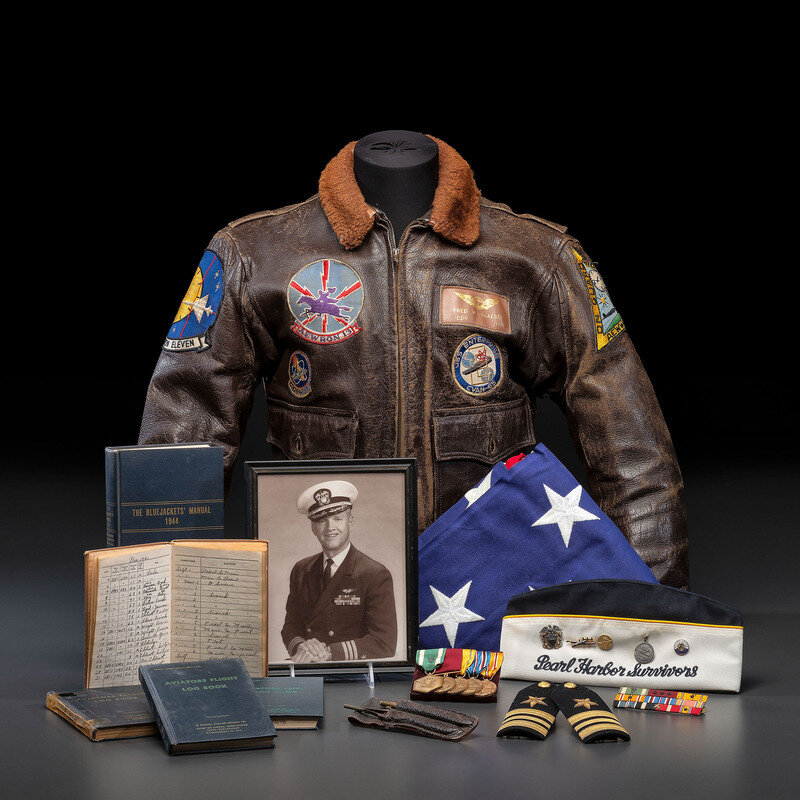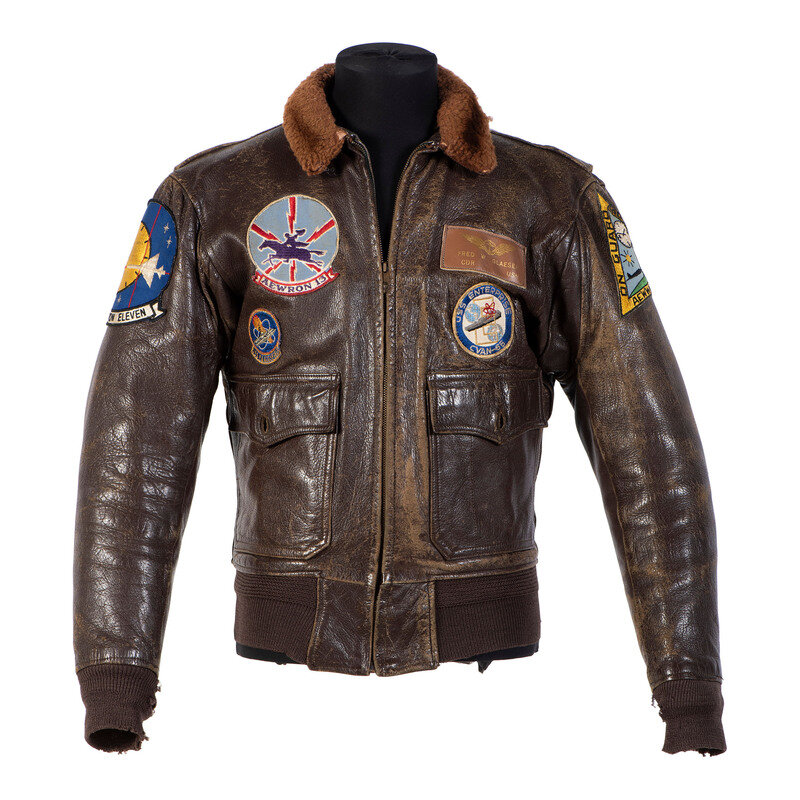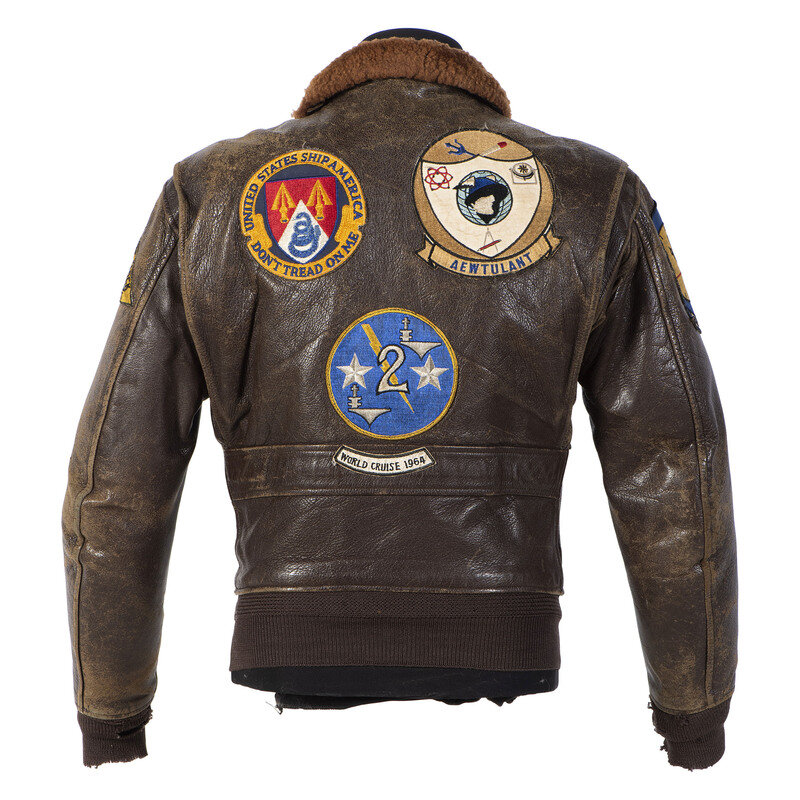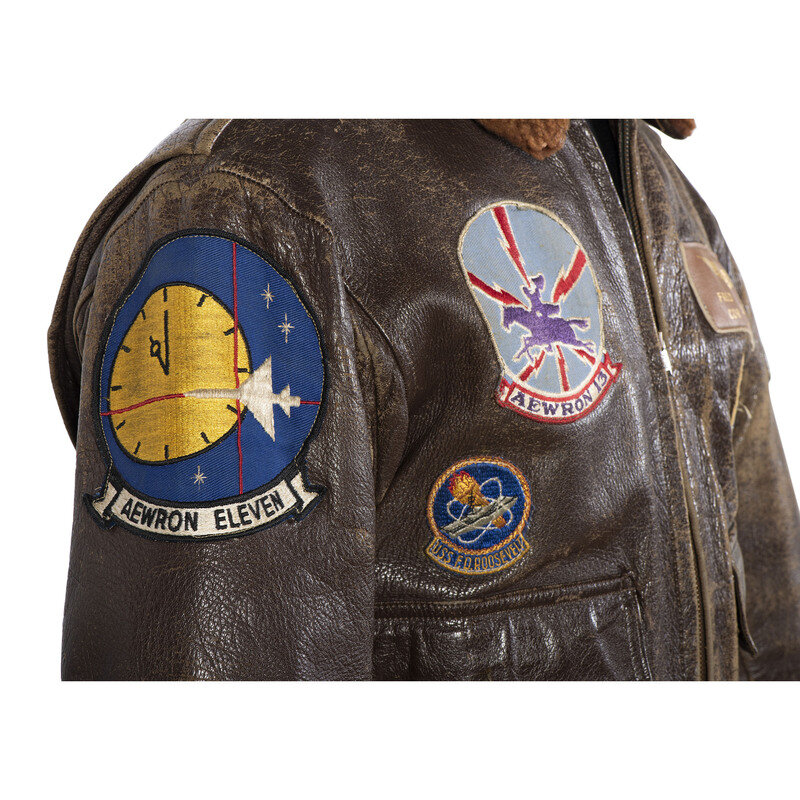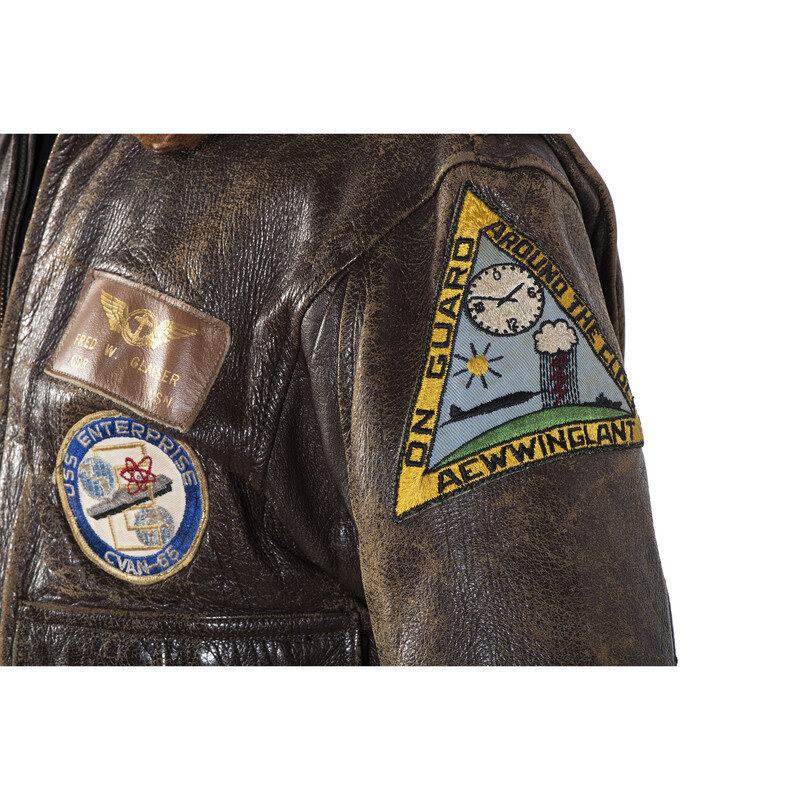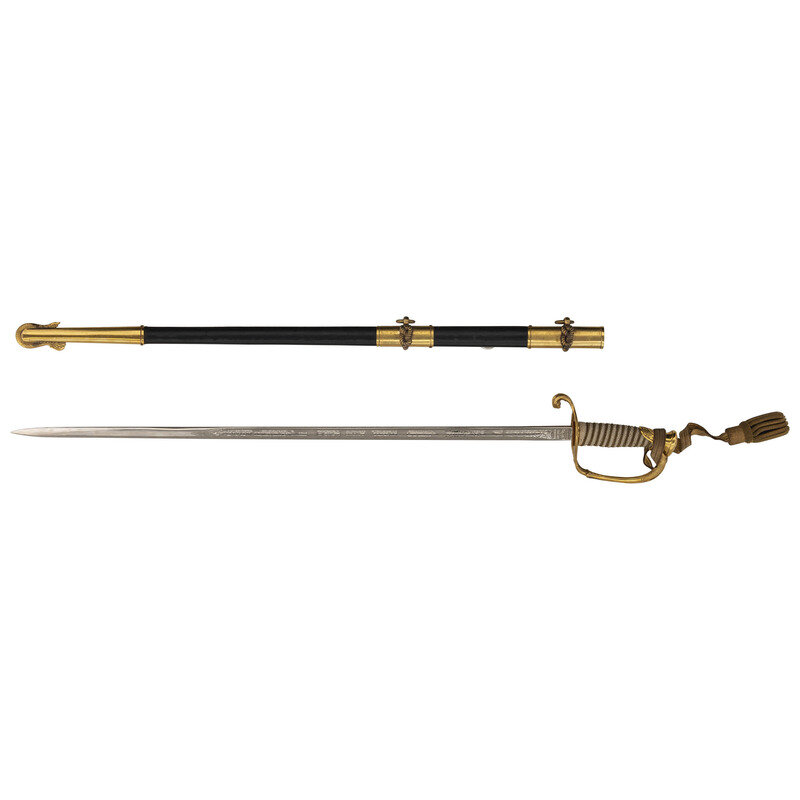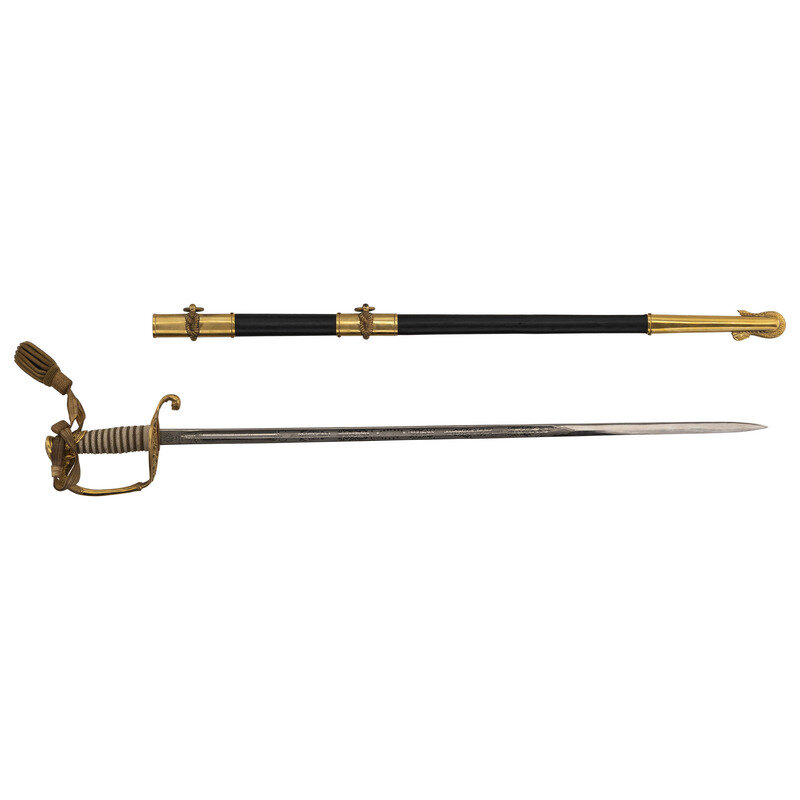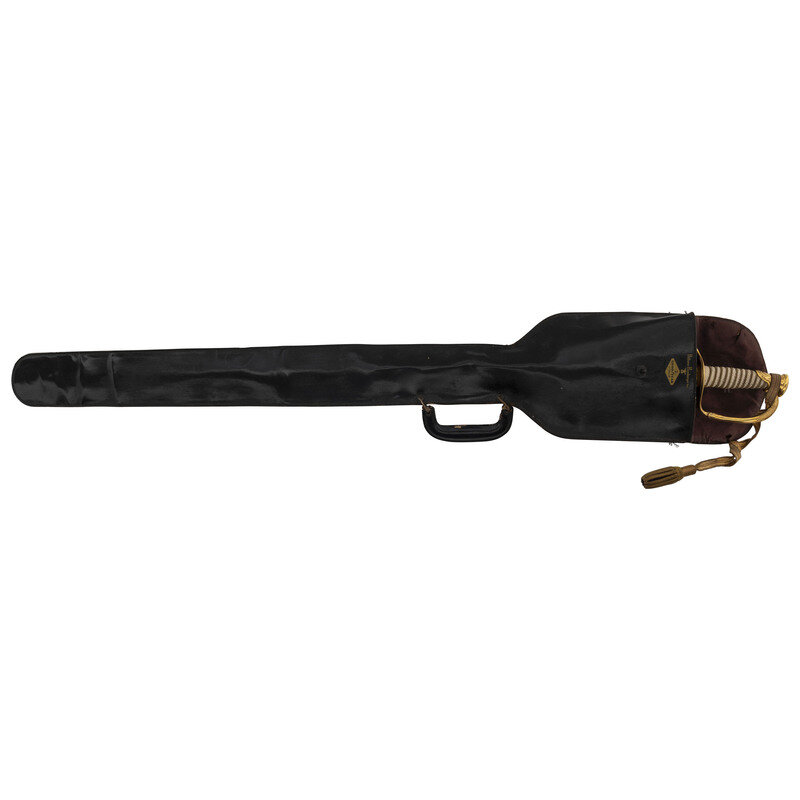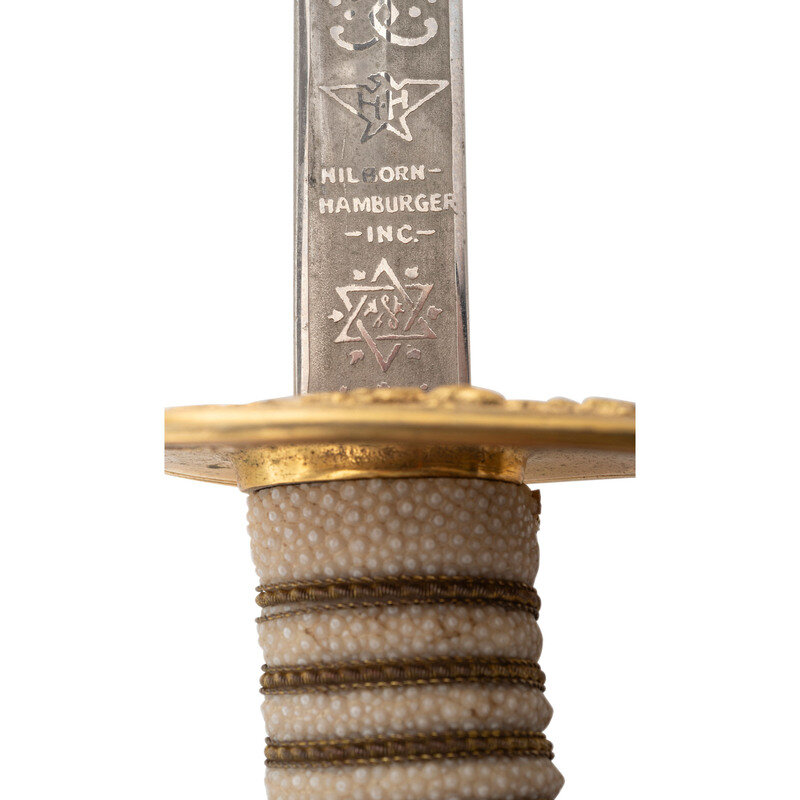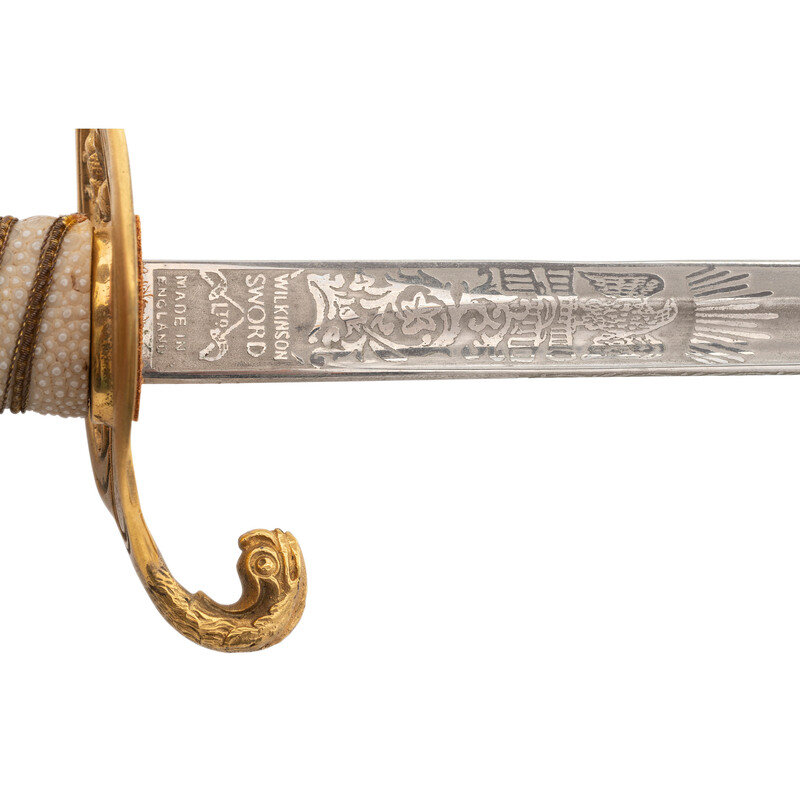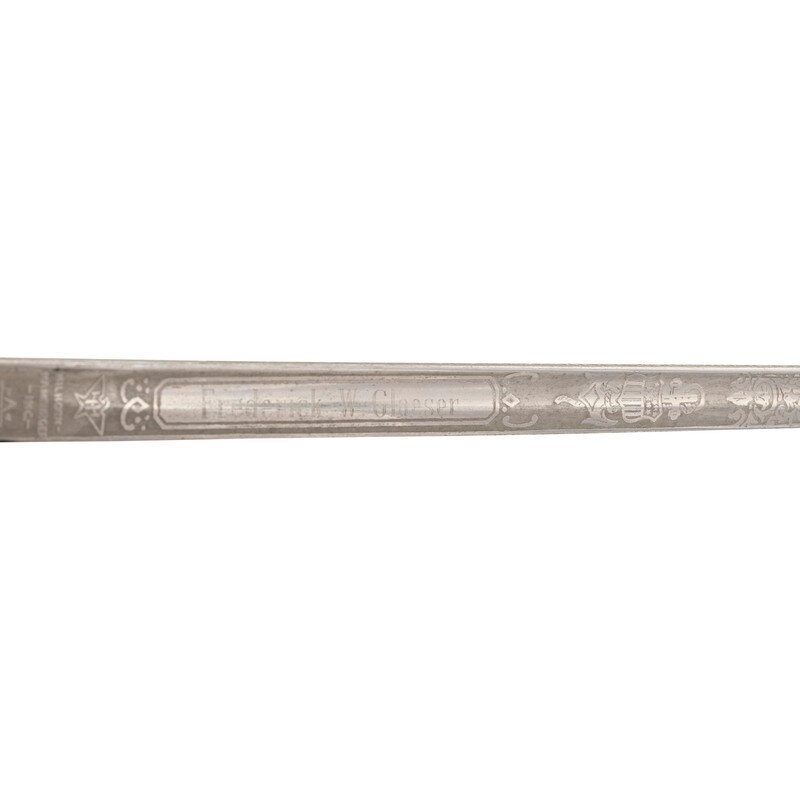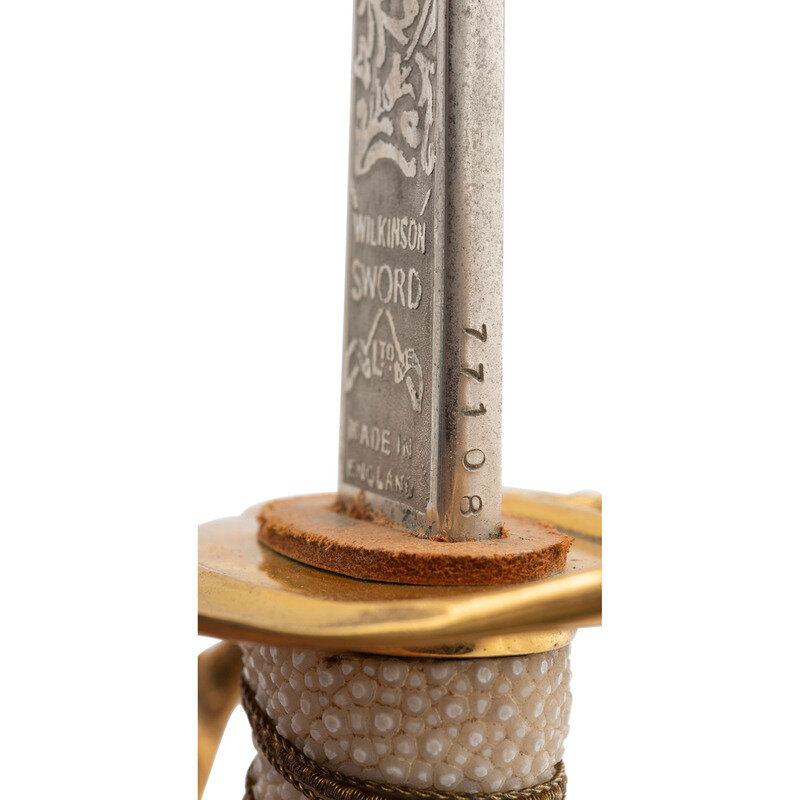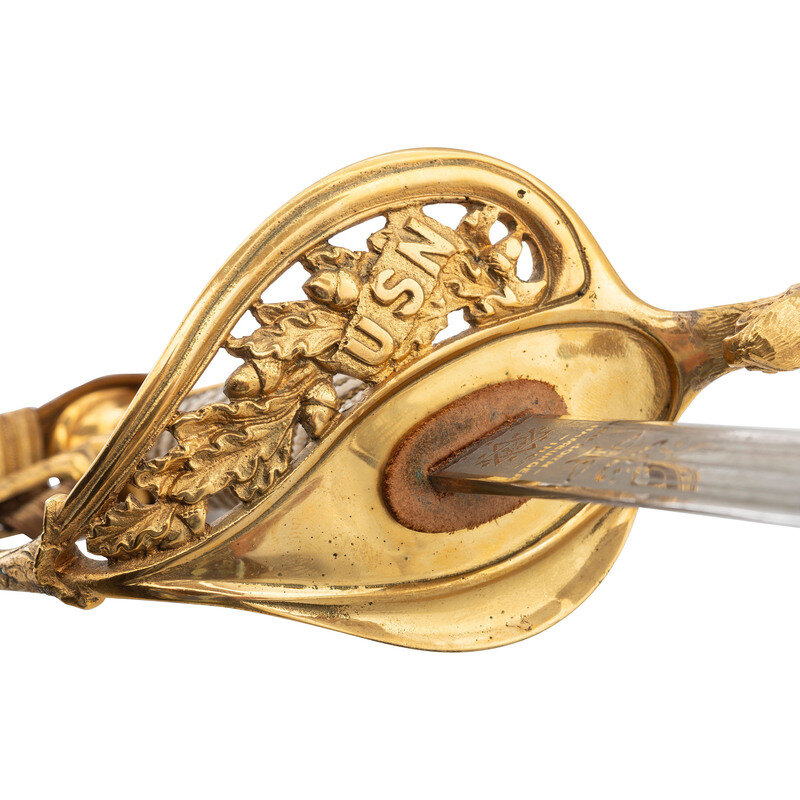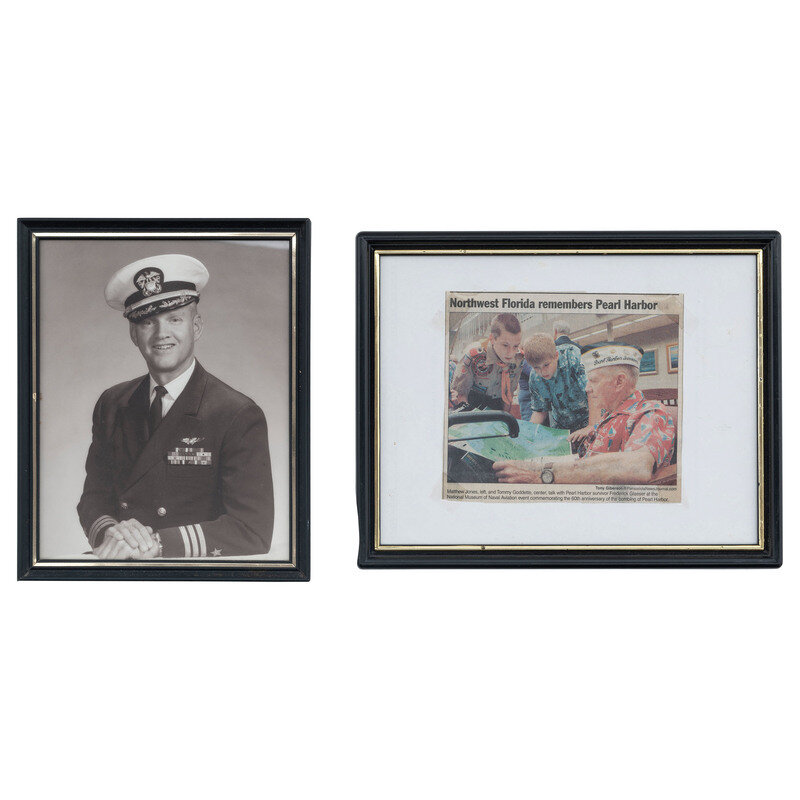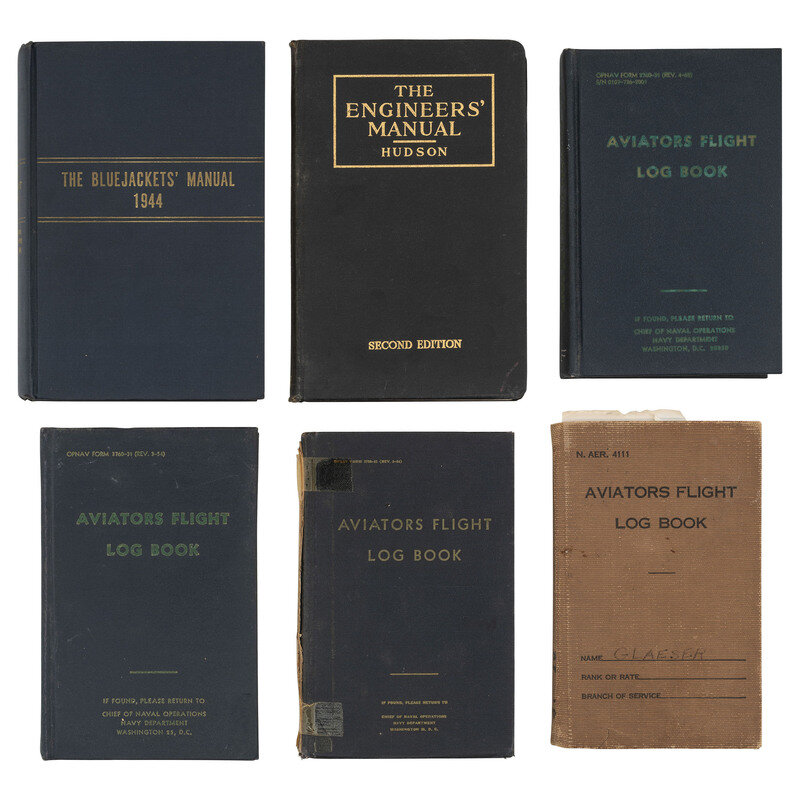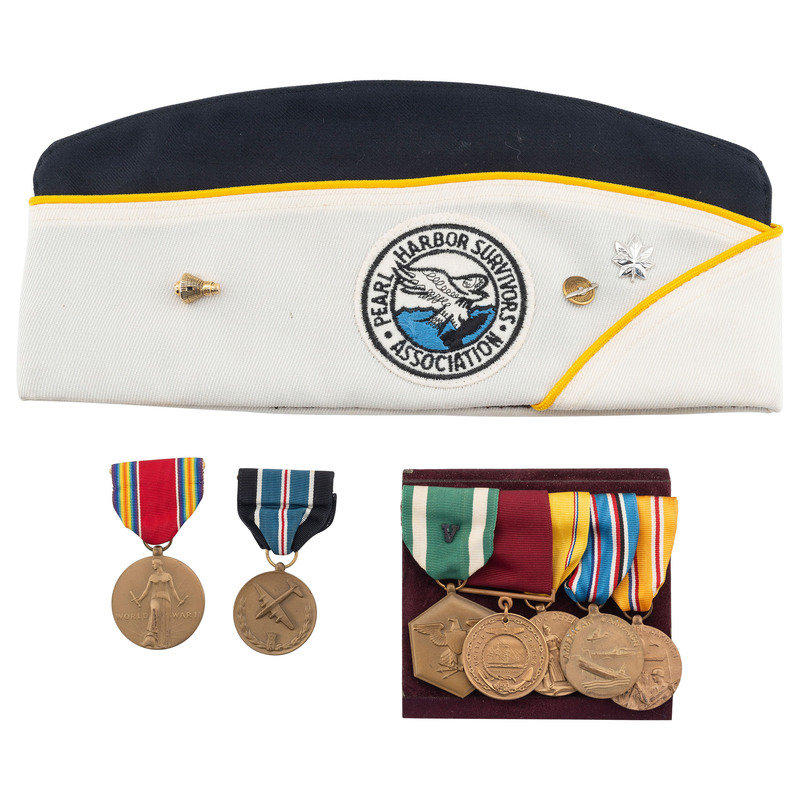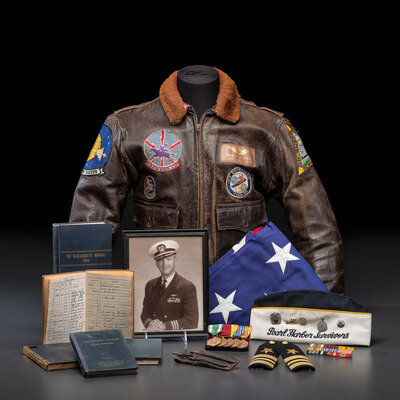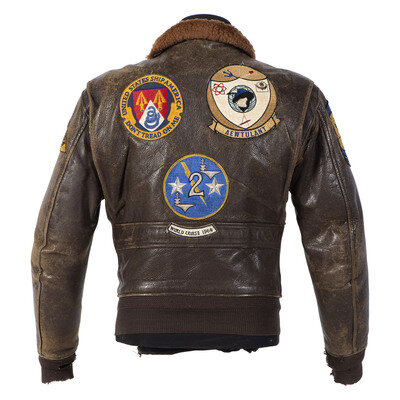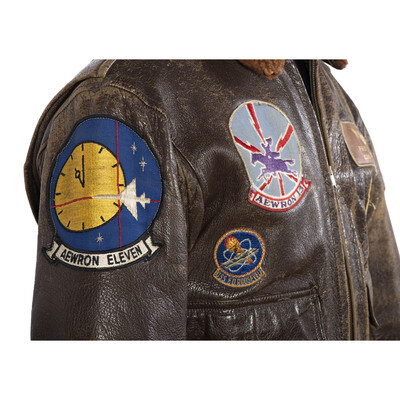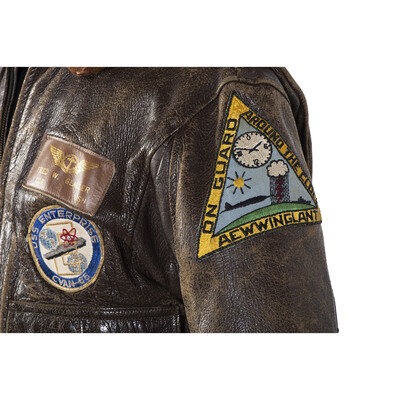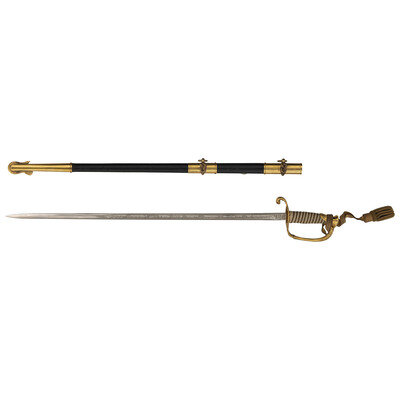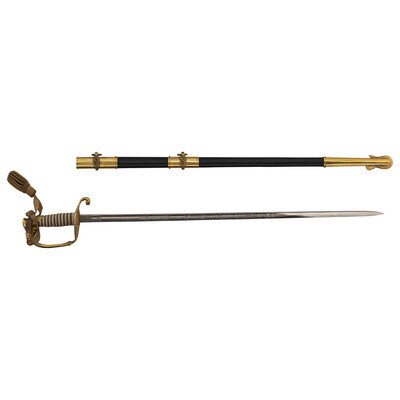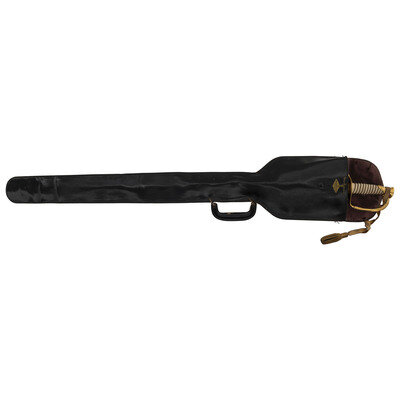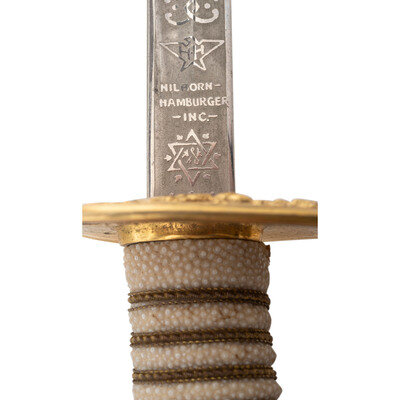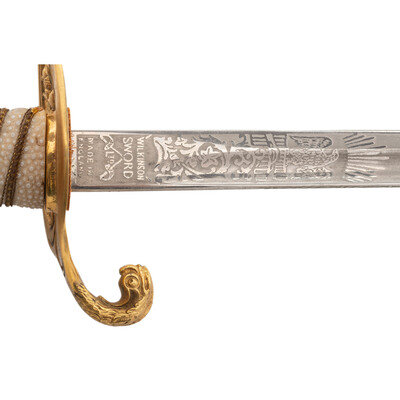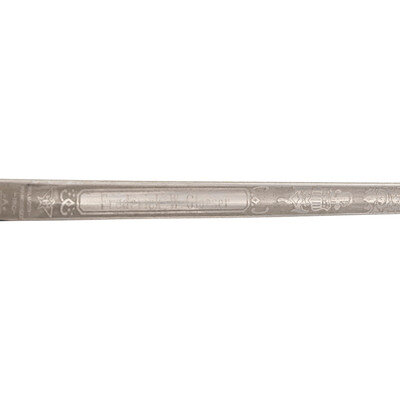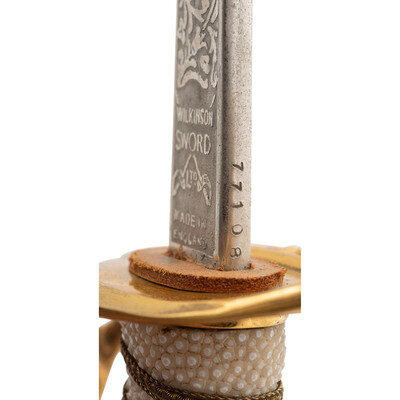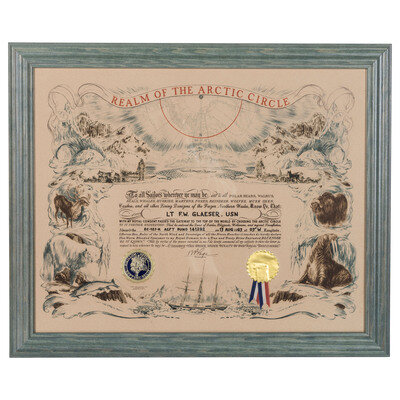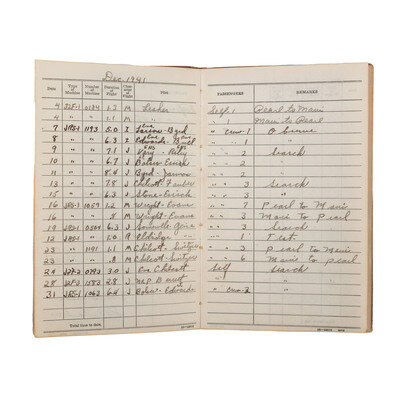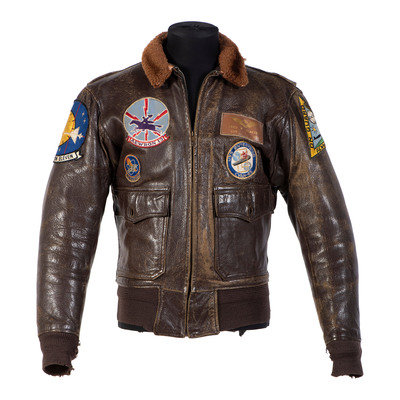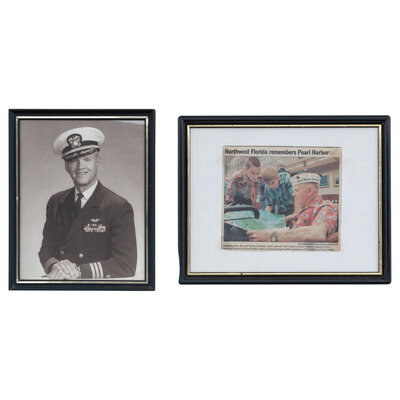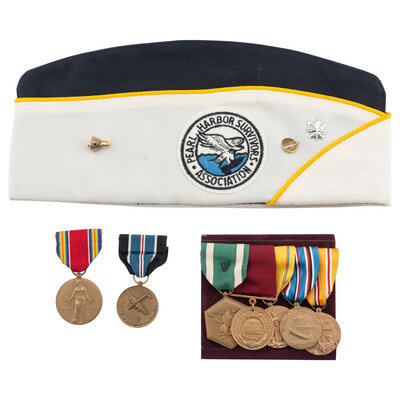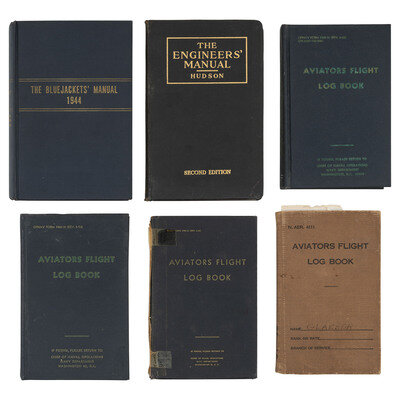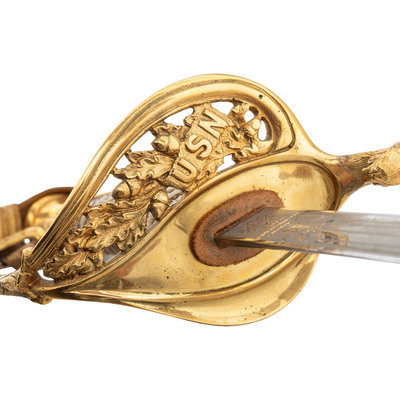Condition Report
Contact Information
Auction Specialist
Lot 158
Lot Description
This lot contains the service archive of Frederick W. Glaeser, one of a handful of American pilots and flight crews that managed to get airborne during the Japanese attack on Pearl Harbor. Glaeser, a Naval Aviator, served for 32-years starting with his enlistment on May 14, 1940 until his retirement on June 30, 1972. He was born on February 7, 1922, and died on March 3rd, 2003.
In the early morning hours of December 7, 1941, the Imperial Japanese Navy began launching the 353 aircraft that would participate in an ambitious surprise attack on the United States of America's naval base at Pearl Harbor, Hawaii. At 7:02 AM, a new radar station operated by US Army personnel detected contacts approaching the island of Oahu. However, a flight of B-17 aircraft was expected to arrive that day, and the contacts were disregarded as friendly aircraft. Soon, the Japanese planes reached the island of Oahu itself with shocked observers on the ground finally catching sight of the sheer scale of the first wave of 200 aircraft. At 7:53 AM, the wing commander of the Japanese aircraft sent the signal "Tora! Tora! Tora!" ordering all of his aircraft to commence their attack. The Japanese Navy had achieved total surprise, and found the warships stationed at Pearl resting at anchor, and the aircraft tasked with defending the harbor sitting cold in their hangars. A cacophony of explosions roused the Americans, who soon scrambled to do something about the attack.
For the pilots of US Navy Utility Squadron One (VJ-1), the attack had come in the midst of breakfast time. Launching just minutes after they heard the first explosions, VJ-1's pilots took on the difficult task of locating the Japanese carrier fleet responsible. Their principal aircraft in this mission, was the (at that time) unarmed and unarmored Sikorsky JRS-1 flying boat. Keenly aware of their vulnerability, the pilots and crews gathered small arms such as Springfield 1903 rifles to defend themselves. Though of negligible value against enemy aircraft, their presence likely made the crews feel somewhat more confident in their chances of survival with no escorts. One of these daring Naval Aviators was Radioman Third Class Frederick William Glaeser aboard aircraft number 1193 flown by Ensigns Nils R. Larson and William P. Byrd. Flying for five hours, the flight crew searched for the Japanese fleet while evading the aircraft still menacing Pearl Harbor. Despite five of their aircraft taking to the skies, and the herculean efforts of their crews, VJ-1 was unable to visually acquire the Japanese Aircraft Carriers. Still, the Navy paid tribute to the heroism of its pilots by awarding the crew of the first JRS-1 to get airborne, piloted by Ensign Westley Hoyt Ruth, the Navy Cross. According to Glaeser's logbook, he flew repeated missions with Ensign Ruth in the months that followed. VJ-1 spent the remainder of the war based out of Pearl Harbor and flew thousands of patrol flights from those islands in search of further Japanese attacks. Additionally, the squadron trained the pilots and crews of future Navy Utility Squadrons.
Glaeser ultimately remained in the Navy after the war and served until 1972. During that time, he functioned as a radio operator, Naval Aviation Observer, and in Airborne Early Warning aircraft. He crewed a variety of airplanes including the Sikorsky JRS-1, J2F Duck, PB6Y, and the TBM "Avenger" during World War II. Glaeser would later serve with Airborne Early Warning Squadron 13 (AEWRON 13), AEWRON 11, and with the Airborne Early Warning Training Unit Atlantic (AEWTULANT). In the years that followed, Glaeser flew aboard Lockheed WV-2 (Later the EC-121) aircraft, and US-2B aircraft, the latter carrier launched. He flew from carriers like USS America (CV-66), USS F.D. Roosevelt (CVA-42), and USS Enterprise (CVN-65). His service took him from the sunny South Pacific to the frigid Arctic Circle. In the process, he supported American combat operations in World War II, the Korean War, and the Vietnam War. Frederick W. Glaeser appears on the muster rolls for US Navy Utility Squadron One (VJ-1) throughout World War II including the quarterly muster roll concluding on December 31, 1941. Copies of these muster rolls are included with this lot.
The archive includes a total of four AVIATORS FLIGHT LOG BOOKs with each respectively covering the periods: 1941-48, 1956-64, 1964-71, respectively, and a final log for 1971 alone. Further items include Glaeser's PEARL HARBOR SURVIVORS/ASSOCIATION cap with assorted buttons representing his career, his burial flag, US Navy Officer's Sword manufactured by Wilkinson Sword Lt. of England with leather scabbard and carrier, US Navy Commendation Medal with V Device, Medal FOR HUMANE ACTION: TO SUPPLY THE NECESSITIES/OF LIFE TO THE PEOPLE/OF BERLIN/GERMANY awarded to those who supported the "Berlin Airlift" of 1948-49, World War II Victory Medal, United States Navy Good Conduct Medal inscribed FREDERICK/WILLIAM/GLAESER/1943, American Defense Service Medal, American Campaign Medal, and the Asiatic Pacific Campaign medal. Also included are uniform accoutrements such as Glaeser's Line Lieutenant Commander shoulder boards, three generations of ribbon appliances, and a UNITED STATES NAVY/NAVAL AVIATION OBSERVER ID dated 1956 in blue leatherette mounting, and Glaeser's Specification 55J14 (AER) flight jacket complete with patches from the various carriers and commands in which he served. The archive includes multiple books, personal effects, and medals all attesting to a long and accomplished service.
This lot is located in Cincinnati.
